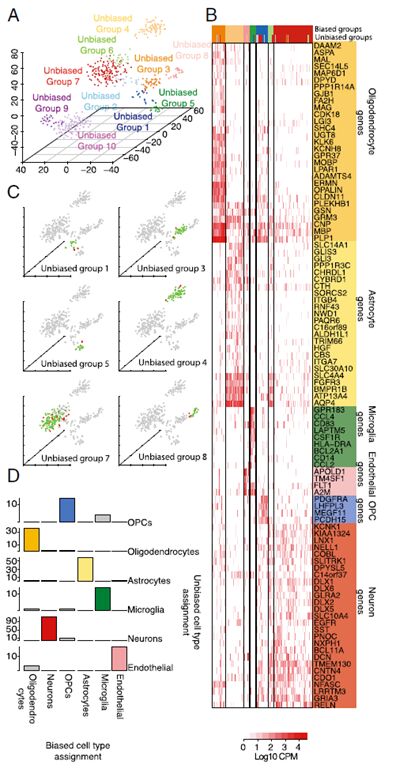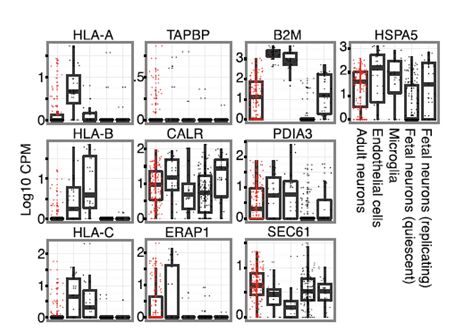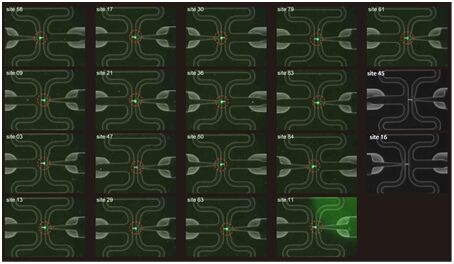The human brain is an extremely complex organ composed of many different types of cells. Traditional cell sorting methods can only classify cells according to a few known cell markers, and the understanding of each type of cells is very limited. Since human brain samples are difficult to obtain, people's understanding of the brain has long been derived from non-primate model organisms. However, the human brain is much more complicated than the model organisms such as mice. There is no way to reveal the molecular characteristics of cells associated with the complex characteristics of the human brain. The Stephen team found that in order to allow the device to penetrate the affected area during surgery, the surgeon needs to remove a small piece of normal cerebral cortex tissue. Therefore, they skillfully used the normal tissues obtained during the operation of 8 epilepsy patients as a sample of adult cerebral cortex for subsequent single-cell sequencing. In addition, they obtained human embryonic cerebral cortex samples from four 16-18 weeks of selective abortion. The research team used the Fluidigm C1 single cell preparation system to perform high-throughput transcriptome sequencing on 482 single cells of these samples. After quality control screening, 466 single-cell RNA sequencing data were obtained. "Traditional immunofluorescence and other technologies can only detect 1 or 2 genes of a single cell; high-throughput RNA sequencing with brain group can only roughly understand the overall gene expression profile of the cell population. We use a single The cell sequencing research strategy can detect the expression level of all genes at the single cell level, combining the resolution of single cells with the breadth of gene detection of next-generation sequencing," the paper wrote. The researchers divided the adult brain cortical cells into 8 categories by analyzing the single-cell sequencing results, and the embryos were divided into 2 categories. Next, they divided 113 neuronal cells into 5 excitatory subclasses and 2 inhibitory subclasses. “We compared the results of the classification using single-cell sequencing data with the results of cell sorting with the classic Marker and found that the two were highly consistent. This shows that even without the a priori molecular Marker, the results of single-cell sequencing can be fully utilized. Accurate classification of cells by subdivision," the authors mentioned. In further research, the Stephen team also discovered a series of unreported interesting phenomena: by comparing the single-cell sequencing results of embryos and adult brains, they found that the expression levels of genes such as FAT3 and EGR1 occurred before and after neuronal precursor cell division. Change drastically. In addition, they found that HLA and other histocompatibility complex-related genes are indeed expressed in a neuron subclass, which subverts the perception that neurons do not express immune molecules. And they also found that the proportion of different types of neurons in the cerebral cortex, human and mouse have no small difference. "If the sequencing sample is a population of cells, these phenomena are difficult to detect, which means that single-cell sequencing is a powerful technical tool," the article said. The successful results of these researches by the Stephen team have laid a solid foundation for mapping human brain cells. "With this map, we can find more cell type-specific markers and link them to specific neural circuits, which will eventually explain the complex mysteries of the human brain," the authors mentioned. original:
Carbomer is an acrylic resin obtained by cross-linking pentaerythritol with acrylic acid. It is a very important rheological regulator. After neutralization, carbomer is an excellent gel matrix, which has important applications such as thickening suspension. According to the dry product calculation, including carboxylic acid group (-cooh) should be 56.0 % ~ 68.0%.
Common carbopol series include: Carbopol 940, 941, 934, 1342, 980, ETD 2020, AQUA sf-1, Ultrez 21, Ultrez 20, etc.
Carbomer,Carbopol,Carbopol 940, Carbomer 940, Carbomer 980, acrylic acid Xi'an Gawen Biotechnology Co., Ltd , https://www.ahualynbios.com

Figure 1. Human brain single-cell sequencing data enables precise cell sorting

Figure 2. Expression of histocompatibility complex-related genes in some human brain cells

Figure 3. Schematic diagram of single cell capture in the Fluidigm C1 system
A survey of human brain transcriptome diversity at the single cell level.
Darmanis S, Sloan SA, Zhang Y, Enge M, Caneda C, Shuerd LM, Gephart MGH, Barres BA,, and Quake SR. Proc Natl Acad Sci; 112(23): 7285-90. (2015)